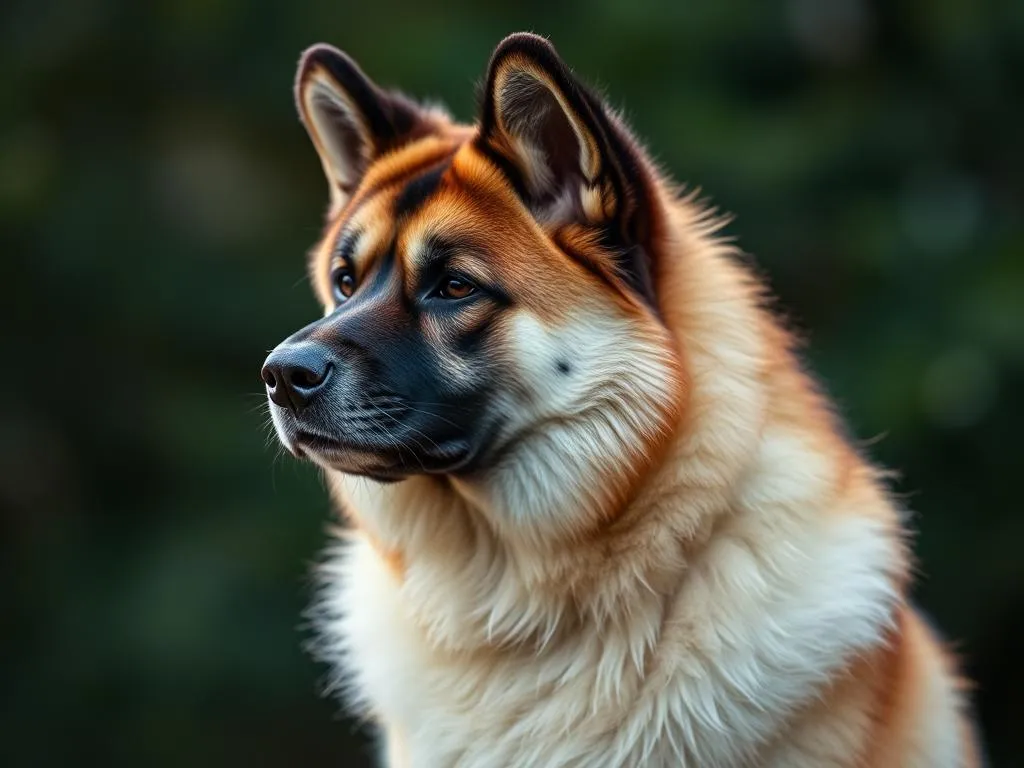
Introduction
Dog breeds are defined by a set of characteristics that distinguish them from others, including physical traits, behavior, and temperament. The concept of dog breeds dates back thousands of years, with selective breeding practices aimed at enhancing specific traits for various purposes, such as herding, hunting, and companionship. As breeds developed, so did the myriad of mixed breeds, which have gained popularity for their unique combinations of traits.
Mixed breeds, including those that involve the Akita, offer an appealing alternative for many dog lovers. They often combine the best attributes of their parent breeds, leading to a diverse range of appearances and temperaments. Adopting a mixed breed can also come with health benefits, as genetic diversity can mitigate some inherited health issues seen in purebreds.
This article will delve into the world of Akita mixed breeds, providing insights into their background, characteristics, care requirements, and what potential owners should consider before bringing one into their home.
Understanding the Akita Breed
Origin and History
The Akita breed originated in Japan, specifically in the mountainous regions of northern Japan. Initially bred for hunting large game, Akitas were revered in Japanese culture, symbolizing loyalty and courage. The breed gained international recognition after the story of Hachiko, an Akita known for his unwavering loyalty to his owner, touched hearts worldwide. Today, the Akita is a beloved companion and a representation of Japanese heritage.
Characteristics of the Akita
The Akita is a large dog with a commanding presence. Males typically weigh between 100-130 pounds, while females range from 70-100 pounds. Their thick double coat can come in various colors, including white, brindle, and various shades of brown.
In terms of temperament, Akitas are known for their loyalty, intelligence, and independence. They often form strong bonds with their families but may be aloof with strangers. This combination of traits makes them excellent watchdogs, but also requires early socialization to ensure they are well-adjusted.
Health Considerations
While Akitas are generally healthy dogs, they are predisposed to certain health issues, including hip dysplasia, autoimmune disorders, and certain types of cancer. Their average lifespan is around 10-15 years, and maintaining regular veterinary check-ups is essential to monitor their health and well-being. Proper care, including a balanced diet and regular exercise, can help mitigate many health concerns.
The Appeal of Mixed Breeds
Advantages of Mixed Breeds
One of the primary advantages of mixed breeds is genetic diversity. This diversity often leads to fewer health issues, as mixed-breed dogs typically inherit a broader range of genes from their parent breeds. Furthermore, mixed breeds can exhibit a delightful variety of temperaments, allowing families to select a dog that fits their lifestyle and preferences better.
Popular Akita Mixes
Akita mixed breeds are becoming increasingly popular, with several combinations standing out for their unique characteristics. Some popular Akita mixes include:
- Akita Lab Mix: A blend of the loyal Akita and the friendly Labrador Retriever.
- Akita Shepherd: A mix with the intelligent German Shepherd, often resulting in a protective yet friendly companion.
- Akita Pit Bull Mix: Combining the gentleness of the Akita with the strength of the Pit Bull.
- Akita Boxer Mix: This mix brings together the playful nature of the Boxer with the loyalty of the Akita.
Each of these mixes offers its own unique traits, making them appealing options for potential dog owners.
Notable Akita Mixed Breeds
Akita Lab Mix
The Akita Lab mix often inherits a sturdy build and a friendly disposition from both parents. Typically, they are large dogs, weighing between 70-100 pounds. Their coats can vary, but they usually have a soft, water-resistant layer thanks to the Labrador side.
In terms of personality, Akita Lab mixes are known for their loyalty and affection towards their families. They thrive in active households and require regular exercise. Ideal living conditions include homes with ample space for play and a secure yard. Training is essential, as these dogs can be strong-willed, but they respond well to positive reinforcement techniques.
Akita Shepherd
The Akita Shepherd is a remarkable blend of the Akita and the German Shepherd, resulting in a dog that is both intelligent and protective. They tend to be large, often weighing between 80-120 pounds. Their coat is typically dense, requiring regular grooming to manage shedding.
This mix is known for its loyalty and protective instincts, making them excellent family pets. They are highly trainable but require consistent leadership and early socialization. Daily exercise is crucial; activities like hiking or agility training can help keep them mentally and physically stimulated.
Akita Pit Bull Mix
The Akita Pit Bull mix combines the strength and determination of the Pit Bull with the loyalty and intelligence of the Akita. These dogs can vary widely in appearance but generally have a muscular build and short coat.
Temperament-wise, they are often affectionate and protective of their families. Early training and socialization are vital to ensure they develop into well-rounded companions. These mixes can be playful and energetic, requiring regular exercise and mental stimulation.
Akita Boxer Mix
The Akita Boxer mix is a playful and spirited combination that often results in a strong, athletic dog. They typically weigh between 60-100 pounds and have a short, dense coat that may require minimal grooming.
This mix is known for its affectionate nature and compatibility with children, making them excellent family pets. They are energetic and require daily exercise, enjoying activities like running and playing fetch. Training should be consistent and positive, as Boxers can be quite spirited.
Caring for Akita Mixed Breeds
Nutrition
Proper nutrition is crucial for the health of any dog, including Akita mixed breeds. A high-quality, balanced diet tailored to their size, age, and activity level is essential. Look for dog food that lists meat as the first ingredient and contains a good balance of protein, fats, and carbohydrates. Regularly monitoring their weight will help prevent obesity, a common issue in larger breeds.
Exercise Requirements
Akita mixed breeds generally have high exercise needs. Daily walks, playtime, and mental stimulation are vital for their overall well-being. Activities such as fetch, agility training, or swimming can help keep them physically active and mentally engaged. Depending on the mix, exercise requirements may vary, so it’s essential to tailor activities to your dog’s specific needs.
Training and Socialization
Training and early socialization are paramount for Akita mixed breeds. They are intelligent dogs that benefit from consistent and positive reinforcement training methods. Basic obedience training should start early, and socialization with other dogs and people should be ongoing. This helps them develop into well-adjusted companions and reduces the likelihood of behavioral issues.
Grooming and Maintenance
Grooming needs can vary depending on the specific Akita mix. Generally, regular brushing is essential to manage shedding, especially during seasonal changes. Pay attention to ear cleaning, nail trimming, and dental care as well. Bathing should be done as needed, using a dog-friendly shampoo to maintain skin health.
Considerations Before Owning an Akita Mixed Breed
Lifestyle Compatibility
Before bringing an Akita mixed breed into your home, assess your lifestyle. These dogs typically thrive in active environments where they can get plenty of exercise and mental stimulation. They do best in homes with space to roam and play, making them less suited for apartment living unless the owner is committed to regular outdoor activities.
Cost of Ownership
The cost of owning a dog can vary significantly depending on various factors, including food, veterinary care, grooming, and supplies. On average, the annual cost for a medium to large dog like an Akita mix can range from $1,000 to $2,000, not including initial adoption fees. It’s also crucial to budget for unexpected expenses such as emergency vet visits or specialized care.
Finding a Reputable Breeder or Rescue
When looking for an Akita mixed breed, it’s essential to find a reputable breeder or rescue organization. Responsible breeders should provide health clearances for the parent dogs and allow potential owners to meet the puppies and their parents. If adopting, visit local shelters or rescue groups that specialize in mixed breeds. Ensure they have a good reputation and prioritize the health and well-being of their animals.
Conclusion
Owning an Akita mixed breed can be a rewarding experience, offering unique characteristics, temperament variations, and the potential for a loyal companion. These dogs often embody the best traits of their parent breeds, making them versatile and adaptable pets. Prospective owners should carefully consider their lifestyle and the specific needs of the mix they choose.
Ultimately, mixed breeds deserve the same love and attention as purebreds, and adopting one can be a fulfilling way to provide a forever home to a deserving dog. Responsible pet ownership, including proper care, training, and socialization, will ensure a happy and healthy life for your new furry friend.









